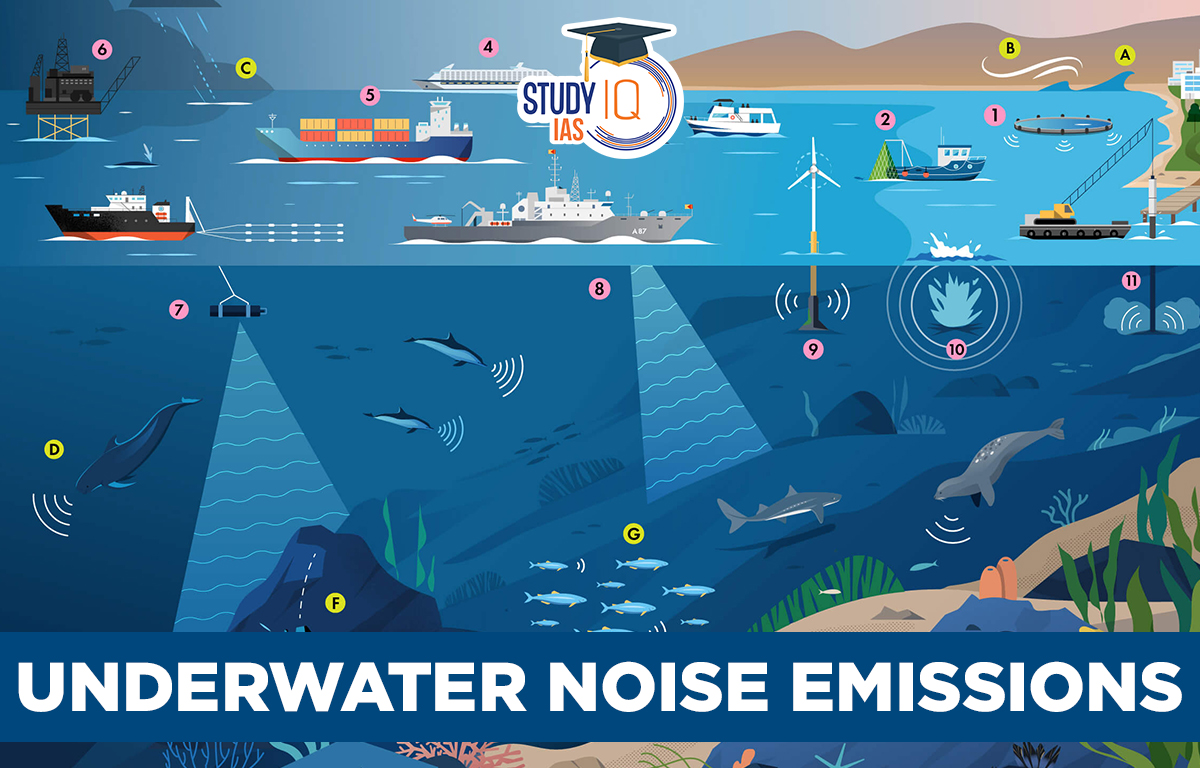Table of Contents
Context: According to a new Study, the rising Underwater Noise Emissions (UNE) from ships in the Indian waters are posing a threat to the Marine Ecosystem.
What are the Key Highlights of the Study?
- The measurement of the ambient noise levels was carried out by deploying a hydrophone autonomous system around 30 nautical miles from the Goa coastline.
- Hydrophones are underwater microphones that can pick up sound waves in water and convert them into electrical signals.
- Increased UNE Levels: The sound pressure levels of UNE in the Indian waters are 102-115 decibels, relative to one microPascal (dB re 1µ Pa).
- The East Coast level is slightly higher than that of the West. There is an increase by a significant value of about 20 dB re 1µPa.
- Causes: Continuous shipping movement is identified to be a major contributor to the increase in the global ocean noise level.
- Impacts:
- Threat to marine life: Increased levels of UNE are endangering the lives of marine mammals whose essential behavioural activities rely on sound as the main form of energy.
- Masking of important sounds: Ships’ noise and vibrations in the low-frequency range (<500 Hz) can mask marine species’ communication frequencies, potentially altering migration routes and impeding their return to deeper waters.
- Long-term effects: The sound that radiates from ships on a long-term basis affects them and results in internal injuries, loss of hearing ability, change in behavioural responses, masking, and stress.
About Ocean Noise Pollution
- Ocean noise refers to sounds made by human activities that can interfere with or obscure the ability of marine animals to hear natural sounds in the ocean.
- Sources of ocean noise pollution:
- The main sources are human activities such as shipping, oil and gas exploration and production, construction, and naval sonar.
- Other sources include commercial and recreational fishing, and underwater blasting.
- Climate change also contributes to ocean noise pollution through the melting of sea ice and the increased frequency of storms.
- The critical role played by sound in the lives of marine animals:


Stats IQ: Global Scenario of Ocean Noise Pollution
- According to a 2019 report from the United Nations, shipping is responsible for the majority of ocean noise pollution, with the number of ships increasing by 2.5% per year.
- The report states that shipping traffic in some areas is now up to 10 times higher than in the 1960s, and this increase in noise is having a detrimental impact on marine life.
- Another report, published in the journal “Nature” in 2018, found that ocean noise has increased by roughly 3 decibels per decade since the 1960s, with some areas experiencing increases of up to 10 decibels per decade.


 MPPSC FSO Recruitment Notification 2025 ...
MPPSC FSO Recruitment Notification 2025 ...
 UNESCO World Heritage Sites of India Lis...
UNESCO World Heritage Sites of India Lis...
 Consolidated Fund of India, Meaning and ...
Consolidated Fund of India, Meaning and ...





















